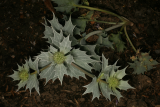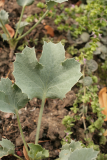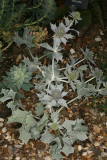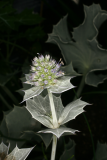Additional notes (click to expand)
Medicinal
Culpeper: ‘ ... bruised and applied to the place, they help the Scrophula, or disease of the throat called the King’s evil, they break the stone, increase seed, stir up lust, provoke the Terms etc.’ Notes: The King’s Evil, or scrofula, was the name for a tuberculous infection of the lymph nodes in the neck, which was supposed to be cured by the touch of a King.
Culpeper, Nicholas. (1650). A Physical Directory . London, Peter Cole.
Geographical distribution
- Africa, Northern Africa, Algeria
- Africa, Northern Africa, Egypt
- Africa, Northern Africa, Libya
- Africa, Northern Africa, Morocco
- Africa, Northern Africa, Tunisia
- Asia-Temperate, Western Asia, Cyprus
- Asia-Temperate, Western Asia, Lebanon-Syria
- Asia-Temperate, Western Asia, Turkey
- Europe, Eastern Europe, East European Russia
- Europe, Eastern Europe, Ukraine
- Europe, Middle Europe, Belgium
- Europe, Middle Europe, Germany
- Europe, Middle Europe, Netherlands
- Europe, Middle Europe, Poland
- Europe, Northern Europe, Denmark
- Europe, Northern Europe, Great Britain
- Europe, Northern Europe, Ireland
- Europe, Northern Europe, Norway
- Europe, Northern Europe, Sweden
- Europe, Southeastern Europe, Albania
- Europe, Southeastern Europe, Bulgaria
- Europe, Southeastern Europe, Greece
- Europe, Southeastern Europe, Italy
- Europe, Southeastern Europe, Romania
- Europe, Southeastern Europe, Yugoslavia
- Europe, Southwestern Europe, France
- Europe, Southwestern Europe, Portugal
- Europe, Southwestern Europe, Spain
- Northern America, Southeastern U.S.A., Georgia
Eryngium maritimum L.
Family: APIACEAEGenus: Eryngium
Species: maritimum L.
Common names: Sea Holly; Sea Eryngium; Sea Eryngo.
Pharmacopoeia Londinensis name: Eryngium
Distribution summary: N.Africa to W.Asia
Habit: Perennial
Hardiness: H5 - Hardy; cold winter
Habitat: Coastal
Garden status: Currently grown
Garden location: Arid zones (Q)
Flowering months: July, August, September, October
Reason for growing: Medicinal



